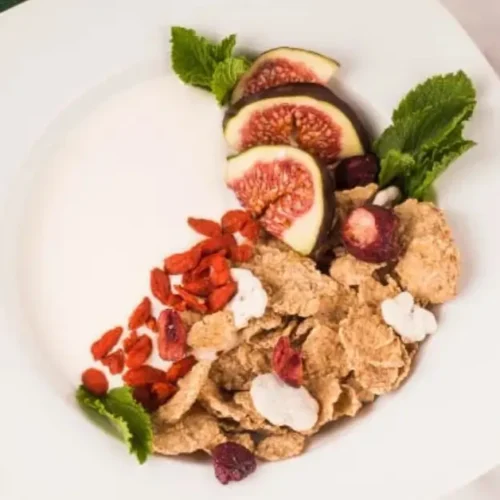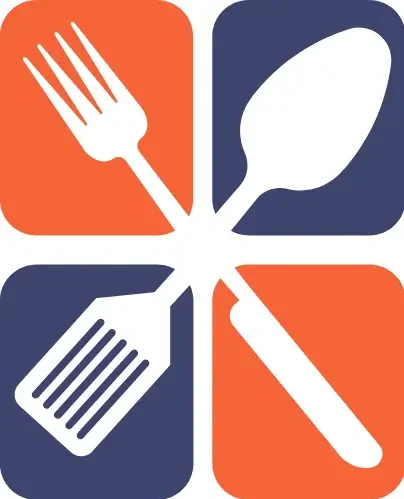The Ultimate Guide to Mexican Breakfast: Recipes, Tips, and Traditions
Table of Contents
ToggleSummary
If you’re a fan of vibrant flavors, fresh ingredients, and hearty meals, a traditional Mexican breakfast should definitely be on your radar. Mexican breakfasts are a delightful combination of textures, flavors, and nutritional elements that leave you full and energized for the day ahead.
Let’s dive into what makes a Mexican breakfast special, how to prepare it, and answer some burning questions about Mexican and Latin American breakfast traditions.
What is Traditional Mexican Breakfast?
Traditional Mexican breakfasts often center around staples such as eggs, beans, tortillas, avocado, chorizo, and various salsas. It’s a meal that’s designed to provide energy for the day and is often enjoyed as a social affair with family and friends.
Common traditional Mexican breakfast dishes
- Chilaquiles: Fried tortilla chips simmered in salsa, topped with cheese, sour cream, onions, and sometimes a fried egg.
- Huevos Rancheros: Fried eggs served on a lightly fried tortilla with a tomato-chili sauce.
- Tamales: Steamed corn dough filled with various fillings like chicken, pork, or vegetables, served with salsa or beans.
- Molletes: Mexican-style open-faced sandwiches, typically served with refried beans, cheese, and sometimes chorizo, topped with pico de gallo.
Additional Mexican Breakfast Dishes
- Enfrijoladas: Corn tortillas dipped in a creamy black bean sauce, then folded and topped with fresh cheese, sour cream, and sometimes chicken or eggs.
- Tacos de Desayuno: Breakfast tacos with scrambled eggs, potatoes, chorizo, or beans, wrapped in warm tortillas.
- Atole: A traditional hot corn-based drink, often flavored with chocolate (called Champurrado), vanilla, or cinnamon. It’s a common breakfast beverage paired with tamales.
- Pan Dulce: Sweet bread varieties like Conchas, Cuernos, and Orejas are typically enjoyed with coffee or hot chocolate.
Popular Mexican Breakfast Beverages
- Café de Olla: A Mexican coffee based on cinnamon and piloncillo
- Agua Fresca: Light and refreshing drinks made from fruits, cereals, or flowers, like Horchata (rice milk) or Agua de Jamaica (hibiscus tea).
- Hot Chocolate: Mexican-style hot chocolate made with real cocoa, often frothed with a wooden whisk called a molinillo.
Dietary Variations
- Vegetarian Options: Many Mexican breakfasts can easily be made vegetarian, like Chilaquiles, Huevos Rancheros, and Molletes by omitting meat-based ingredients like chorizo and focusing on eggs, beans, and vegetables.
- Gluten-Free Options: Since corn tortillas are a staple in many Mexican breakfast dishes, many meals are naturally gluten-free. Chilaquiles, Enfrijoladas, and Huevos Rancheros can all be enjoyed without gluten.
Nutrition Facts
- Chorizo-based dishes: High in protein but also higher in fat content. A serving of Huevos con Chorizo (eggs with chorizo) can have around 700-800 calories due to the sausage.
- Atole and Champurrado: These thick, corn-based drinks are energy-dense, providing carbohydrates and often around 200-300 calories per cup depending on sweetness levels.
Meal Timing
- Early Breakfast (Desayuno): In Mexico, breakfast is often eaten between 7:00 AM and 9:00 AM, focusing on dishes like eggs, tamales, or molletes.
- Almuerzo (Late Breakfast/Brunch): Taken around 10:00 AM or 11:00 AM, a heartier meal that can include tacos, enchiladas, or pozole. It’s considered more substantial than desayuno.
Common Breakfast Spices and Flavors
- Chilies: Jalapeños, serranos, and chipotles are often used in salsas or as toppings.
- Cumin: Adds earthy warmth to beans and sauces.
- Epazote: An herb commonly used in cooking beans, adding a unique flavor and helping with digestion.
- Lime: A key garnish, often served on the side to brighten the flavors of many dishes.
Special Regional Breakfasts
- Oaxaca: Known for its use of Oaxaca cheese, often melted into quesadillas or used in Molletes.
- Yucatán: Breakfasts here feature dishes like Huevos Motuleños, eggs served on a tortilla with black beans, plantains, and tomato sauce, unique to the region.
Breakfast Culture
- Family Gatherings: Breakfast in Mexico is often a time for family. Many families gather for almuerzo, making it not just about food but a social event.
- Street Food: In larger cities, breakfast can be quick and on-the-go. You’ll find street vendors selling tamales, atole, or tacos de desayuno to busy workers.
Origins of Popular Mexican Breakfast Dishes
- Chilaquiles: This dish traces its roots back to pre-Columbian times when indigenous people used leftover tortillas to avoid waste. The name comes from the Nahuatl word “chīlāquīlli,” meaning “chilis and greens.”
- Tamales: Dating back thousands of years, tamales were a portable meal for warriors and travelers in the Aztec and Maya civilizations. They are often stuffed with regional ingredients like mole or corn.
Mexican Breakfast Around the World
- In the U.S.: Mexican breakfast foods have grown in popularity, particularly breakfast burritos and breakfast tacos, which are adaptations of traditional Mexican dishes.
- In Europe: Mexican breakfast offerings are gaining attention in cities like London, Paris, and Berlin, where authentic restaurants serve dishes like Huevos Rancheros and Chilaquiles to a more global audience.
Fusion Breakfast
- Mexican-American Brunch: Many modern brunch spots mix Mexican ingredients with American-style breakfasts, creating dishes like Mexican Benedict (poached eggs on a tortilla, topped with spicy hollandaise) or Breakfast Nachos.
- Tex-Mex Twist: In regions like Texas, you’ll often find Tex-Mex takes on traditional breakfasts, with extra cheese, sour cream, and jalapeños added to dishes like Migas (scrambled eggs with fried tortilla strips).
Popular Breakfast Sides
- Frijoles Refritos (Refried Beans): A common side dish, refried beans are often served with eggs, tacos, and enchiladas. Made by mashing cooked beans (typically pinto or black beans) and frying them in oil or lard.
- Pico de Gallo: A fresh salsa made from diced tomatoes, onions, cilantro, and lime juice, used to top eggs, tacos, or molletes.
- Guacamole: Made fresh from mashed avocados, lime, and salt, guacamole is commonly served with tortilla chips at breakfast, particularly in Chilaquiles or on breakfast tostadas.
Seasonal Breakfast Foods
- Capirotada: While traditionally associated with Lent, Capirotada, a bread pudding made with raisins, nuts, cinnamon, and cheese, is sometimes eaten for breakfast, especially during religious holidays.
- Rosca de Reyes: A traditional bread served on Three Kings’ Day (January 6), this sweet bread can be part of a festive breakfast, accompanied by Mexican hot chocolate.
Breakfast Etiquette in Mexico
- Pacing: Mexicans often savor their meals slowly, especially almuerzo, which can last longer than a typical breakfast. Meals are enjoyed with family, with emphasis on conversation and connection.
- Complimenting the Chef: It is considered polite to compliment the cook, especially if you’re invited to someone’s home for breakfast. Dishes like Tamales take time to prepare and are often a source of pride.
Regional Sauces and Salsas
- Salsa Verde: Made from tomatillos, this green salsa is a tangy accompaniment to eggs, chilaquiles, and tacos.
- Mole: A complex sauce that varies by region, Mole Poblano (from Puebla) and Mole Negro (from Oaxaca) are sometimes incorporated into breakfast, especially in tamales or eggs with mole.
Health and Nutritional Impact
- Protein-Rich: Mexican breakfasts are often high in protein thanks to the combination of eggs, beans, and sometimes meat like chorizo or ham.
- Fiber-Rich: With the use of beans, tortillas, and fresh vegetables like avocado, Mexican breakfasts often include a good amount of dietary fiber, supporting digestive health.
Special Breakfast Occasions
- Festive Breakfasts: During holidays like Día de los Muertos, families may prepare special breakfast dishes to honor the deceased, often including foods like tamales and pan de muerto (bread of the dead).
- Sunday Breakfast: In Mexican culture, Sundays are often reserved for large, family-oriented breakfasts or almuerzos. Special dishes, like menudo (a spicy tripe soup), are sometimes served after a long Saturday night of celebrations.
Frequently Asked Questions
What Do Mexicans Eat for Brunch? In Mexico, brunch usually mirrors breakfast but can be even more elaborate and flavorful. A popular brunch dish is Pozole, a traditional soup made with hominy (a type of corn), meat (typically pork), and seasoned with lime, chile, and topped with cabbage, radishes, and onions. You might also see Tacos de Barbacoa, traditionally made with slow-cooked meat, often enjoyed with a squeeze of lime and a spicy salsa. Additionally, Enchiladas Suizas (Swiss-style enchiladas) made with creamy green sauce and melted cheese are often a brunch favorite.
What is Breakfast in Cuba? In Cuba, breakfast is quite different from the hearty Mexican morning fare. A traditional Cuban breakfast typically includes Café con Leche (strong coffee with steamed milk), paired with Tostada—buttered, toasted Cuban bread, often dipped into the coffee. Some may enjoy a light serving of pastelitos (sweet pastries filled with guava or cheese) or empanadas (savory turnovers filled with beef, chicken, or ham). Cuban breakfasts are lighter compared to their Mexican counterparts, focusing more on simple, quick bites.
How Do You Say Breakfast in Mexico? In Mexico, the word for breakfast is “desayuno”. However, there’s a popular saying in Mexico that goes, “desayuno fuerte, comida ligera, y cena pequeña” which translates to “strong breakfast, light lunch, and small dinner,” emphasizing the importance of a hearty first meal.
Conclusion
- A traditional Mexican breakfast revolves around ingredients like tortillas, beans, eggs, and salsas, with dishes like Chilaquiles and Huevos Rancheros leading the pack.
- Mexicans eat brunch dishes like Pozole and Tacos de Barbacoa, adding variety to their mid-morning meals.
- In Cuba, breakfast is light, often featuring Café con Leche and Tostada.
- Breakfast in Mexico is referred to as “desayuno”, a crucial part of the day meant to fuel you with wholesome energy.
Still hungry? Check-out these delicious recipes:
- Marry me chicken
- Moroccan 7 vegetables Couscous
- Tomahawk steak
- cheese curds
- toll house cookie
- the best crispy fried chicken recipe
- birthday cake
- chickpea pasta recipe
- chicken brine recipe
- apple breakfast recipe

Mexican Breakfast
Equipment
- Frying pan
- Saucepan
- Spatula
- Knife and chopping board
- Blender (for making fresh salsa)
Ingredients
- 8 corn tortillas: cut into wedges
- 1 cup of green or red salsa
- 1/2 cup of queso fresco or shredded cheese
- 2 eggs: optional, fried or scrambled
- 1 avocado: sliced for garnish
- 1/4 cup of chopped onions
- 1/4 cup of sour cream
- Fresh cilantro and lime for garnish
Instructions
- Fry the tortillas: Heat oil in a pan and fry the tortilla wedges until crispy.
- Prepare the salsa: If you're making fresh salsa, blend tomatillos or tomatoes with onions, garlic, and chilies.
- Simmer the tortillas: Toss the fried tortilla chips into a saucepan and cover them with your salsa. Simmer for 5 minutes until the chips soften slightly but still retain some crunch.
- Fry the eggs: Fry or scramble the eggs, adding salt and pepper to taste.
- Assemble: Place the salsa-soaked tortillas on a plate, top with fried eggs, crumbled cheese, chopped onions, cilantro, and a dollop of sour cream. Garnish with avocado slices and lime.
- Serve: Enjoy immediately while hot.








17 thoughts on “The best Mexican Breakfast”